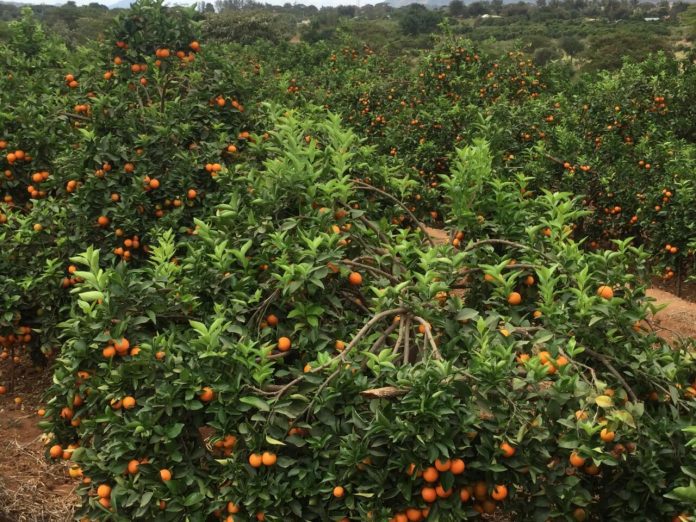Pixie farming has become a lucrative venture in Kenya owing to its high demand both locally and internationally.
The fruit is known for its sharp yellow colour and is sweeter and juicier than the ordinary orange variety.
Being a variety of citrus fruits, Pixie oranges thrive in hot climatic conditions. Currently, Makueni County leads in the production of this fruit, with farmers raking millions per season.
According to Makueni farmers, when properly managed, an acre of pixie can give a turnover of up to Sh1.2 million per year. These fruits are sold at an average price of Sh80 per kilo at the farm gate.
While some farmers have made a lot of money from this seedless fruit, others have made huge losses. Benson Mutunga, a pixie consultant in Makueni, says one of the biggest nightmares in pixie farming is diseases, which can wipe out the entire produce.
Mutunga explains that pixie fruits require a lot of attention and should be sprayed all year round to keep pests and diseases at bay.
The fruits are susceptible to a number of pests and diseases, such as thrips, mealybugs, and citrus greening disease, which can cause significant damage to crops, leading to low yields and productivity.
Inside David Eseli’s 40-acre farm with Hass avocado, coffee, and sugarcane
The common pests include leaf miners, aphids, and thrips, while the diseases are sooty mold, collar rot, and powdery mildew.
Experts say pests and diseases are more serious if the soils are deficient of some minerals, hence the need to test the soil before planting to be guided on the necessary amendments.
Silvester Muli, a pixie farmer, says that pixie farming is labour-intensive due to the care needed. He explains that an acre of land can accommodate 200 seedlings.
Muli explains that a mature pixie tree can produce around 50 kg of oranges which are sold at Sh80 per kilo. He estimates that a farmer can make around Sh500,000 profit from the fruits per season.
According to Muli, a farmer starts harvesting fruits two years after planting. He explains that production is usually low in the first years and peaks after four years.
“You will start realizing profit after four years. That is when production peaks. At two years, you may not make any profit because production is lower than the production cost,” he says.








